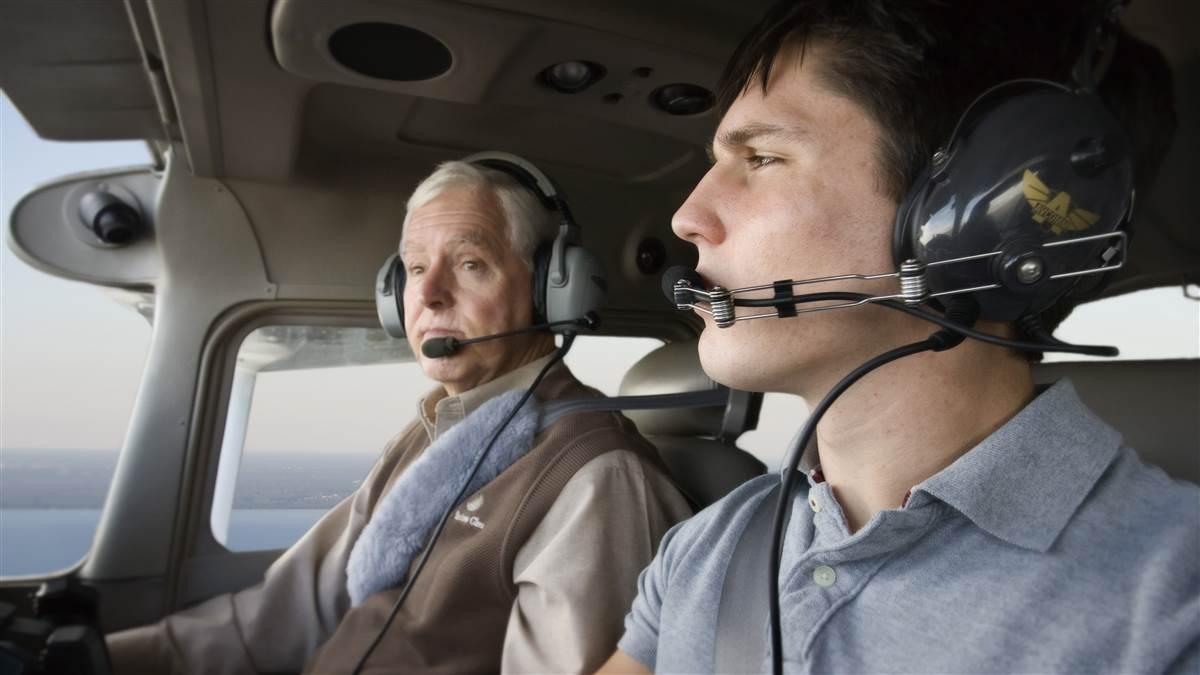Career pilot: Taskmasters
Designated pilot examiners are in demand

Of course, any applicant who is properly prepared by a flight instructor and who has become intimate with the airman certification standards (ACS) should breeze through the ordeal. Often the wild card in this scenario is the FAA’s taskmaster for the test: the designated pilot examiner (DPE). Who is this person? Where does he or she come from? How will I be treated: with care or just shy of an inquisition? Personalities among DPEs differ, but the one thing that should be consistent is the administration of the test. The guiding document is always the ACS (or practical test standards, in some cases) so whether a test is taken in Arizona or Maine, the test content and performance standards should remain consistent.
There are more than 1,000 DPEs authorized by the FAA through Part 83 of the federal aviation regulations. That part of the rules authorizes the FAA to designate citizens to perform evaluation and certification work on behalf of the U.S. government.
DPEs are regular folks who are steeped in aviation experience. They could be past or present airline pilots; flight school chief instructors; air taxi pilots; or former FAA inspectors. Although some DPEs have testing fees as a sole source of income, the FAA encourages its examiners to be engaged in aviation. To assure that its DPEs are involved in the industry, the FAA recently established a requirement that all DPEs must attain a certain personal flight activity level every 12 months to justify a continuation of testing authority. In the case of airplane DPEs, they need to accrue at least 60 hours of pilot in command time every 12 calendar months. Additionally, DPEs must conduct a minimum level of testing each 12 calendar months to maintain proficiency and to establish a need for a DPE’s service.
A large Arizona flight school was compelled to import DPEs to satisfy the applicant backlog.Many seasoned pilots have coveted a DPE authorization and have applied, some waiting years for the nod. The local flight standards district office makes the determination on appointing a new DPE and must satisfy the FAA’s “need and ability” criteria. In short, there must be a demonstrated need for additional staffing and the FSDO must have the ability to manage that designee. The FSDO historically obtained a list of qualified DPE applicants from the delegation branch in Oklahoma City.
For the first time in recent memory, the FAA is poised to seek out and appoint qualified DPE applicants because of a critical need for testing resources. In one well-known instance, a large flight school in Arizona was compelled to import multiple DPEs from around the country (at handsome fees) to satisfy the backlog of pilot applicants seeking tests. Additionally, DPEs were limited in testing to a home FSDO district but could test elsewhere through a geographic coordination process which could be quite cumbersome. Going forward, a DPE authorized in one region could test anywhere in the country where there is a need, without coordination with multiple offices.
If interested in pursuing what could be best termed as a part-time opportunity, the first step is to search for FAA Order 8000.95. Volumes 1 and 3 address this. The initial requirements to test at the commercial pilot/instrument level in an airplane single-engine land aircraft are:
- 2,000 total hours acting as pilot in command, which includes 1,500 in airplanes; 500 in class; 100 at night; 200 in complex airplanes; 100 instrument flight (actual or simulated); and, in the past month, 300 in airplanes. Testing in large, turbine-powered aircraft has additional requirements.
- 500 hours as a flight instructor in airplanes, including 100 in class; 250 of instrument flight instruction, of which at least 200 were in airplanes; and 150 preparing airmen for commercial or airline transport pilot certificates with airplane categories or airplane type ratings or instrument airplane ratings.
If you meet the minimum criteria, the next step is to apply for DPE authority via the FAA’s web-based application system: Designee Management System (DMS).
Wearing the FAA hat as a designated pilot examiner is not for everyone but, candidly, one of the more rewarding aviation experiences is serving as a pilot’s career launch pad. Awarding a pilot applicant with an FAA airman certificate based upon a great job during a practical test is a privilege that is hard to beat.
